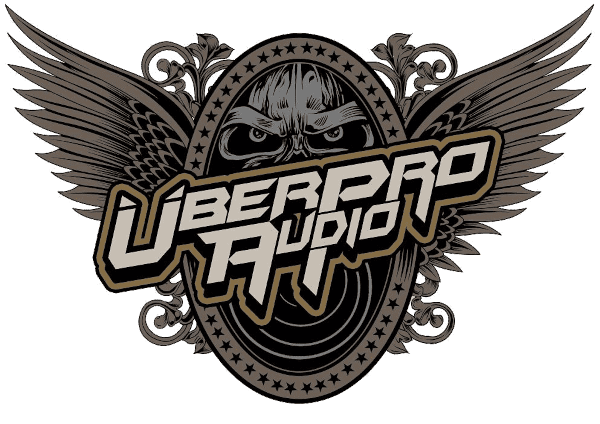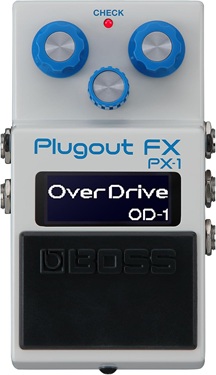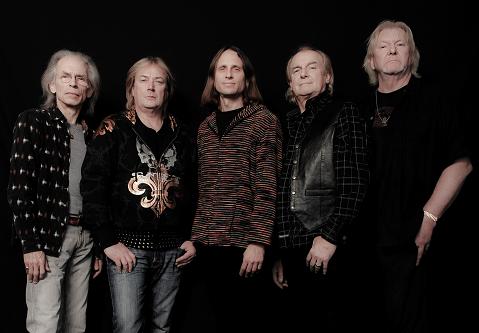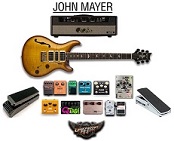Pioneers of prog Yes are prepping for a North American tour with the intent to perform three milestone albums from beginning to end—The Yes Album, Close to the Edge, and Going for the One - and we had a chance to rap with Chris Squire all about it. For those of you looking for more specific details about Chris’ rig, these can be answered by visiting http://www.chrissquire.com and you can find out how close they’ll be coming to you by heading over www.yesworld.com and checking the tour schedule.
Uber Pro Audio: Thanks for taking the time to talk with us at Uber Pro Audio Chris! I have to say, as a Yes fan I’m pretty excited; you guys will be joining us here in the States in about three months and performing three albums in their entirety correct?
Chris Squire: Yeah, that’s right. That would be Close to the Edge, Going for the One, and The Yes Album in that order. Chronologically The Yes Album is the earliest album from 1970, Close to the Edge is around ‘ 72/’73, and Going for the One is ‘76/’77 but we wanted to maybe not do them strictly in that order because we think it would make a better show the other way around.
UPA: These were pretty significant albums in Yes’ career, but was there anything specific that made you gravitate towards showcasing these specific albums?
CS: Yeah, well they’re all in their own way landmark albums for Yes; The Yes Album from 1970 was the first album that got us noticed not only in the UK where it was actually a number one selling album, but on the back of that it brought listeners in the US to our attention so I suppose you could say it was the launch pad for Yes’ US career. So yeah, that was an important album for us. Also, it was the first album where Steve Howe had become a member of the band. So The Yes Album definitely has a lot of significance in terms of Yes’ history.
The Close to the Edge album of course was the first time we attempted to do the longer form piece of music even though we had been stretching the length of our tracks on our first three albums where we were stretching tracks to longer than the norm. But by the time we got to Close to the Edge we had made a conscious decision to do that piece named, “Close to the Edge” and make it take up one side of what was of course the vinyl album. Back in those days you could only really get twenty minutes worth of good quality of sound on a vinyl album. So we wanted to do a song that was sort of a twenty minute long piece, but was its own suite I guess you could say. And of course also on that album is “Siberian Khatru,” and “And You and I,” and those were about ten minutes long each. So not many tracks on that album but definitely our entrance into a longer-form style that we went on to embellish in later albums.
I guess Going for the One also had a position of note mostly because it was the first album we made that was outside of the UK. Until then all our recordings had been done inside the UK but we went and recorded that album in Switzerland and ended up living there through the winter time for about 6 months while we were making it. That was a new thing for us too at the time, to do that. And it came out in a very interesting fashion as well.
UPA: Any skiing in Switzerland (laughs)?
CS: I personally didn’t because I was a little concerned that we’d all blow the whole thing (laughs). I was a little concerned it would be a little pointless that we’d all be in Switzerland and one of the musicians ends up breaking something or other on the ski slope so we were a bit hesitant to get fully involved in that. I remember the crew indulged and a lot of them got broken arms (laughs) and ankles and all kinds of things. I think Alan White did have a go at it but I believe he was on the bunny slopes (laughs).
UPA: I guess the last time you guys as a band performed any album from start to finish was around 1973, if my facts are correct. Are there any nerves about doing three in a row forty years later? Is that a real daunting task for you as a band?
CS: Well, yeah. I know that we did do that thing were we had the Tales from Topographic Oceans album out and that was, well, a bit more daunting I think than what we’re attempting to do now. We’ll have to see how it works out but obviously we’re pretty much used to playing quite a few of the songs. I think that “A Venture” from The Yes Album is the only song that we really don’t ever play live so that’s gonna be a bit of a learning curve but it’s not the most complicated song that we’ve ever done. Probably the most challenging is going to be “Turn of the Century” from Going for the One to the best of my memory. We have played it before but it’s not an easy track to pull off live. A lot of it, of course, is because it doesn’t have drums in the traditional sense. It’s very orchestral and it’s almost a track that needs a conductor in a way because it’s very orchestral but we’ve done it before and I’m sure after a bit of rehearsal it will all fall into place.
UPA: Absolutely. Have you started rehearsals yet?
CS: No. No, we’re going to be rehearsing a couple weeks prior to the start date of the tour and we’ll be doing that in L.A. probably.
UPA: Three classic albums from three different points in the bands career; how, if at all, are you varying your approach to your live sound for each albums performance or did you favor maybe a more universal approach for one bass sound that would work across the board?
CS: Well, from a bass playing point of view there’s quite a lot of different modes on those albums and a selection of bass guitars too. Some of it is my mainstay Rickenbacker 4 string—there’s probably more of that on The Yes Album - but by the time we get to Going for the One there’s quite a few different tunings that we used on that album and I used my 8 string bass on the actual title tune, “Going for the One,” so I’ll be getting that out and firing that up. And let me see, what else is on there… There was definitely a few different sounds on the Close to the Edge album and Going for the One.
UPA: How many basses are you bringing on the road with you?
CS: Hmm, let me think… It’s going to be at least five or six. Definitely six I think. There’s Fender Jazz bass on “Parallels,” from Going for the One album and of course there’s also my triple neck bass on the “Awaken,” song from Going for the One and that comprises of a fretless, an 8 string, and a regular bass. There’ll be at least six that I’ll have to play and of course I always bring a few back ups.
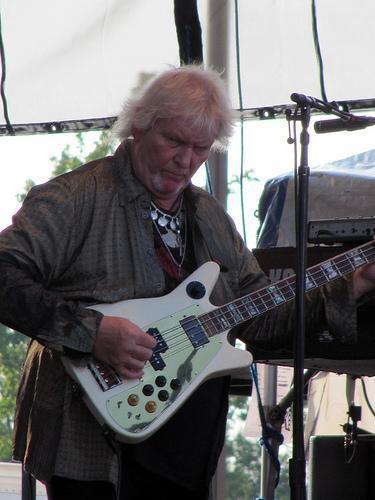
UPA: Yes, well I’m sure that’s what one would expect on such a monumental tour. Does your rig this time around vary at all from any of the recent tours that you’ve done with Yes?
CS: It’s the first time we’ve actually decided to go for this concept of playing an album and playing it in sequence as they were released [on the album]. I’m led to believe by things I’ve read that listeners really like that because there’s an added satisfaction almost to the point of knowing what the next tune is going to be when you’re listening to the previous tune. So there’s a kind of an extra bit of magic that comes into play that people seem to like. I’m looking forward to the whole journey.
UPA: You’re definitely changing the component of the live experience by performing the albums with the track sequence in which they were written.
CS: Yes, well, the way there were not necessarily written but produced basically, yes.
UPA: And the way that we experience them as listeners when we put on a record and enjoy it. So how, if at all, has your live setup evolved or changed over the years of touring with Yes?
CS: We have I believe—excluding live albums—I think we’ve counted twenty studio albums of fresh material so we always have a big spectrum of tunes to choose from. The way we’ve worked it in the past is just to look at the original albums and cherry pick tracks from those so this is kind of different in a way. And of course we tend to improvise in the instrumental passages and some guitar solos. I don’t know if we’re still going to keep that in as part of the concept. I think we may, rather than play it note for note verbatim. I think the guitar solo on, “Yours is no Disgrace,” will be longer because we have a certain way of doing that that seems to work well but I don’t know; ‘til we get together and do it we aren’t absolutely sure on some things so there’ll be a learning curve for us in rehearsal.
UPA: When you’re in the studio you have plenty of time to tinker and toy with your sound but not so much live, so when you’re relying on a live rig for your sound what’s the one thing you look for? How do you approach getting your sound out of a live rig versus how you would do it in the studio?
CS: I’ve always tried to emulate the album’s sounds and the effects, reverbs, echoes, fuzz tones, delays, choruses. All those things I have in my rig to emulate those sounds and I’ve always tried to do that live—sometimes more successfully than others I think—but [the album] is the blueprint of what we’re attempting to do [live].
UPA: Do you have one piece of gear you just can’t do without when you’re on tour?
CS: Well, I have a number of pieces of equipment that have been with me for a long time that would be hard to replace. Some of my vintage effects, my Maestro—made by Gibson back in the 70s actually—Bass Brassmaster Fuzz Tone is definitely something that I’ve always used and that has as certain response, especially with my Rickenbacker. And you know, there’s other pieces of equipment that I’ve used for years and some of them are analog, some of them are digital, and of course there’s different qualities even in the digital domain of how the sound comes out of some machines as opposed to others. It’s a bit like the difference between vinyl and CDs really. I’ve tried to keep as much of my old analog gear, effects and stuff, as possible and keeping my fingers crossed it’ll still work. It’s been working for nearly 50 years (laughs)! Of course, I’ve had my 100 watt Marshall amp that long as well, which I still use. I also use an Ampeg rig along with that but generally I operate those when they come out with the latest models and they supply with the latest and greatest Ampeg stuff which always seems reliable and good. They have an emphasis on trying to maintain good quality sounding digital equipment so that’s good.
UPA: As you said, you’ve been at this live now for 50 years, but this is a new chapter—three albums in one night from start to finish. Do you have any plans to release another live album in the catalog of Yes live albums, or maybe a DVD or a Blu-Ray release from this tour at all?
CS: Oh yeah, I’m absolutely sure that by the time the tour is complete we’ll definitely have documented both audio and video. That’s just part of the parcel these days that one has to do but it will probably be more towards the end of the tour when things are hopefully running smoothly. We’ll be doing that I’m sure.
UPA: That sounds great. As a fan that’s something to really get excited about. For me, Close to the Edge has always been my favorite Yes record. I just want to say again, thanks so much for taking the time to talk with us. From all of us here at Uber Pro Audio, we wish you all the best for a happy and healthy 2013, and have safe travels on the road and all the success you can have on the tour coming up. Thanks so much Chris, we really appreciate it.
CS: Sure. Bye Kevin. Take care, it was a pleasure talking to you.
Checkout our Chris Squire bass rig page on UberProAudio.
Interview by Kevin Williams.
